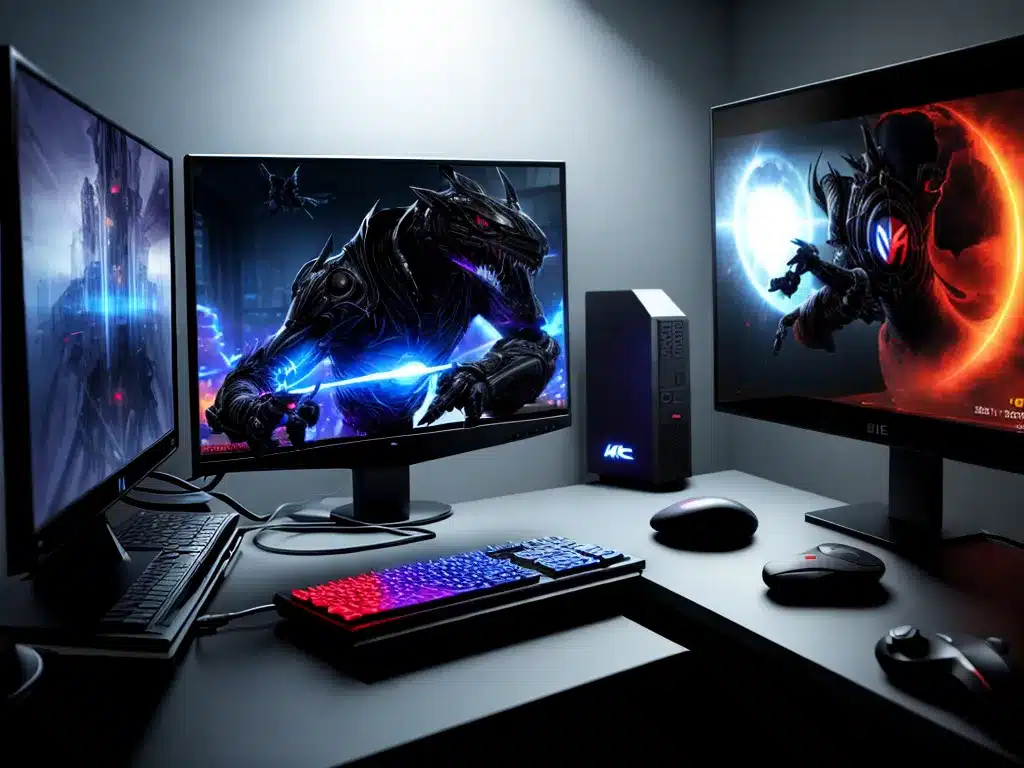
Gaming on a PC with limited hardware can be challenging, but with some tweaks and compromises, you can still make games look great without breaking the bank on upgrades. Here are my tips for making games look good on a budget PC:
Lower Resolution Settings
One of the easiest ways to boost performance and make games run smoothly on budget hardware is to lower the game’s resolution. For example, dropping from 1920×1080 (1080p) to 1366×768 can provide a significant fps boost. The game will look more pixelated, but the tradeoff for playability is often worth it. Just make sure to use your GPU control panel to scale the lower resolution so it fills your monitor without stretching or squishing the image.
Adjust Graphics Settings
Dive into the game’s graphics settings menu and start turning down or disabling options like anti-aliasing, shadows, texture quality, draw distance, and post-processing effects. Focus on tweaking settings that control quality rather than resolution. Often you can sacrifice some visual fidelity for big performance gains. Test different presets like Low, Medium, and High and find the right balance for your system.
Optimize With GeForce Experience
If you have an NVIDIA GPU, use GeForce Experience to optimize game settings for your specific hardware. The app analyzes your components and configures graphics options for the best performance. This takes the guesswork out of manually tweaking settings. Optimize for maximum performance, not maximum quality.
Lower Render Resolution
Some games have a render resolution setting separate from display resolution. Lowering render resolution reduces the game’s internal rendering resolution before upscaling to your display. This lightens the load on your GPU for improved framerates. A render resolution of 90% or 80% is a good starting point.
Overclock Your GPU
If possible, overclock your graphics card to eke out some extra performance. Apps like MSI Afterburner make overclocking easy. Even a moderate 5-10% GPU overclock can help smooth out gameplay on budget hardware. Just watch temperatures and stability.
Close Background Apps
Shut down any unnecessary apps and processes running in the background before launching your game. These can consume RAM, CPU cycles, GPU resources, and disk bandwidth, negatively impacting in-game performance. Keep your system lean and clean.
Add More RAM
Having sufficient RAM is crucial for gaming, especially with budget graphics hardware. 8GB is acceptable, but 16GB or more is ideal if your motherboard supports it. Upgrading to faster dual channel RAM provides a nice boost too. More RAM means less disk paging and less stuttering.
Game On an SSD
Install games on a solid state drive if possible. The faster seek times and data transfer speeds of an SSD vs. a traditional hard disk provide shorter load times and smoother gameplay. This improves performance without upgrading other components. Reserve SSD space for your most-played games.
Overclock Your CPU
If you have a CPU with an unlocked multiplier, overclock it to get more value out of your processor. Even a moderate overclock of a few hundred MHz can help performance. Just don’t go overboard. Focus on GPU overclocking first.
Use Resolution Scaling
Some games feature rendering resolution scaling that renders the game at a lower resolution then upscales to your display resolution. For example, 50% resolution scale renders the game at 1280×720 but scales up to 1920×1080. This can boost fps significantly.
Turn Down Physics Effects
Advanced physics and destructible environments can tank performance on budget GPUs. Lower or disable these settings to focus GPU resources on rendering. The visual splendor of walls crumbling isn’t worth choppy framerates.
Play at 720p or 900p
If your budget GPU is really struggling, go even lower on resolution like 1280×720 (720p) or 1600×900 (900p). This reduces the number of pixels rendered for big performance gains. At this point image quality suffers significantly, so only use this if truly necessary.
Install Mods Sparingly
Some graphics mods like HD textures and lighting effects look amazing but can demolish performance on budget PCs. Resist the urge to install too many. Vet each mod to ensure it won’t tank fps or VRAM usage. Focus on performance-friendly mods.
With some compromise and graphics tweaking, you can enjoy smooth gameplay and decent visuals on budget hardware. The key is finding the right balance of settings for acceptable image quality and playable framerates. Don’t be afraid to experiment to find that sweet spot.












